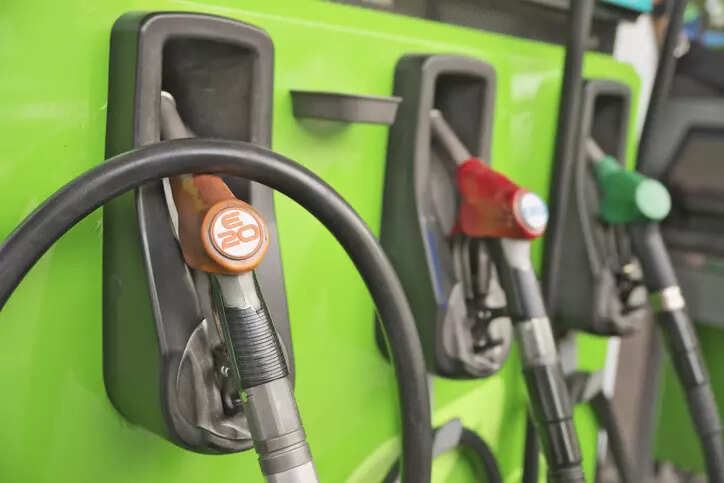
When Rahul Vaidya noticed his 2019 Volkswagen Vento’s mileage drop from a steady 11-12 kmpl to just 7-8 kmpl, he initially blamed it on traffic. Or maybe it was the age of the car, he thought.
Over time, he figured that the response to a dab on the accelerator wasn’t as crisp as it used to be. The ride felt heavier, and the fuel gauge continued to hover near E faster than ever.
After months of living with these issues, he finally took his car to the service centre. The diagnosis was swift – his car wasn’t E20-compliant.
In case you have been living under a cave, the petrol now being sold across India contains 20 per cent ethanol – a formulation Vaidya’s Vento wasn’t designed to handle.
Unless reinforced, ethanol-sensitive components like rubber seals, fuel lines and gaskets degrade and the engine, uncalibrated for this new fuel mix, underperforms.
The fix: replace critical parts and recalibrate the engine. “These changes restored the performance,” Vaidya said. “But I had no idea my car wasn’t ready for E20 in the first place.”
He’s not alone.
Mahesh Nair, who owns a 2021 Suzuki Brezza, saw his mileage drop by more than a fifth. Jerky drives, poor pick-up, and sluggish acceleration became the norm. After much back-and-forth with mechanics, he too learned the cause – and solution.
His car, though newer, needed ECU tuning and E20-compatible components to handle the new fuel. Once fixed, the issues vanished.
Both Vaidya and Nair’s experience points to a larger issue.
India’s ethanol transition is outpacing consumer awareness. And that is creating major issues for India’s automobile owners, oil cos, automakers and lawmakers who are blaming each other. Simply put, one of the biggest transitions in fuel standards ever in India missed taking people along.
A notchy shift
As part of an ambitious ethanol-blending programme, the Indian government mandated E20 fuel availability across the country from nearly two and half years back. From April 2023, all new vehicles were required to be E20-compliant, with stricter enforcement from April 2025.But nine out of 10 cars currently on Indian roads are only E10-ready, meaning they’re built to handle a maximum of 10 per cent ethanol in petrol. Mixing higher concentrations can affect their fuel efficiency, engine health and long-term reliability.
And with consumer experience playing out over a period of time, that is creating discontent among car owners.
Many consumers don’t even know what E20 is – or whether their vehicle can handle it. “There’s a glaring gap in awareness,” said Naveen Soni, former president of Lexus India. “OEMs must educate car buyers. Consumers are stakeholders too. They deserve transparency.”
Service centres report increasing cases of rough idling, knocking engines, worn gaskets, and fuel pump failures. The fixes are usually straightforward – replacing rubber hoses and recalibrating engines – and can often be done during regular servicing. But not all technicians know what to look for, and there’s no escalation protocol in place yet.
With the issues consumers are facing lagging the rolling out of the fuel by a few months at the very least, attribution of the problem to the fuel is creating simmering discontent now.
Right label
For the average driver, the shift to E20 feels subtle – until it isn’t.
There’s no standardised labeling at fuel pumps to indicate what blend is being dispensed. Car owners unknowingly fill up with E20, assuming it’s the same petrol they’ve always used. But behind the scenes, the ethanol’s corrosive and hygroscopic nature – it absorbs water from the air – wreaks havoc if the vehicle sits idle for long.
The fuel itself doesn’t help. Ethanol has around 34 per cent less energy content than petrol, meaning it naturally delivers fewer kilometers per litre.
Industry executives estimate a 7 per cent efficiency drop in non-E20 vehicles, though official studies, like those from ARAI and the Ministry of Petroleum and Natural Gas (MoPNG), claim it’s only 1-6 per cent.
Reji Mathai, director, ARAI says in the run up to the implementation of E20, ARAI, Society of Indian Automobile Manufacturers (SIAM) and Indian Oil, under the directive of Ministry of Petroleum and Natural Gas (MoPNG) had undertaken a joint study where they picked up new and old E10 compatible vehicle mix of two and four wheelers (BS VI & BS IV) and evaluated them on E20.
“The vehicles performed satisfactorily and there was a minor increase of 2 to 6 per cent in fuel consumption. The accelerated lab tests for material compatibility showed some degradation of certain plastics & elastomers that come in contact with the fuel. However, field trials showed no abnormalities.”
Car and two-wheeler manufacturers are walking a tightrope. Many unofficially admit that warranties may not hold if E10-designed cars use E20 fuel.
Two-wheeler companies, including market leader Hero MotoCorp, have issued advisories to customers on the potential impact of the E20 fuel .
“Older vehicles, manufactured prior to April 2023, may require modifications in the engine-fuel system for it to be tuned to run efficiently on E20 fuel,” it said on its website.
“We didn’t ask for ethanol blending,” said a senior executive at a major carmaker, speaking anonymously. “So why should we foot the repair bill? Rubber and plastic parts corrode, especially when the car isn’t driven regularly. It’s a known issue.”
Oil companies are adding necessary additives to address any fuel related corrosion issues, Mathai says.
Brazil, the world’s second-largest ethanol producer, took decades to arrive at its current “flex-fuel” success model. Ricardo de Oliveira Lima, former VP of Brazil’s automotive dealers’ federation, suggests India consult companies like Magneti Marelli and Bosch – pioneers in corrosion-resistant flex-fuel technology.
In Brazil, ethanol is viable when priced at 70 per cent of gasoline – an equation that makes environmental and economic sense. But India isn’t there yet.
Win some, lose some
From the government’s perspective, the ethanol blending programme is a strategic win. According to MoPNG, from 2014 to 2025, ethanol blending has helped India save over ₹1.44 lakh crore in foreign exchange, substitute 245 lakh metric tonnes of crude oil, and reduce CO₂ emissions by 736 lakh metric tonnes – equivalent to planting 30 crore trees.
But the economic alignment with agriculture and energy security – including benefits to sugarcane farmers and lower crude oil dependency – has left average consumers playing catch-up.
“Earlier, sugar prices were down and farmers struggled,” said Deepak Ballani, Director General of the Indian Sugar & Bio Energy Manufacturers Association. “Today, sugar prices are up 11 per cent, and with ethanol in demand, farmers finally get better prices.”
MoPNG also claims that payments to farmers from ethanol alone this year will touch ₹40,000 crore, with forex savings of ₹43,000 crore.
However, for existing owners, dropping mileage and rising maintenance costs are adding up.
“E20 has a lower heat content than pure petrol, so a marginal drop in fuel efficiency is inevitable,” said IV Rao, Distinguished Fellow at TERI (The Energy and Resource Institute). “The extent will vary by manufacturer and model, depending on how the engine is tuned, and actual mileage will still be influenced by driving style and road conditions.”
The ministry maintains that performance issues can be addressed via routine servicing and minor part upgrades. But for owners, it’s about not being left in the dark.
Bajaj Auto has shared a simple solution to keep BS3 and older motorcycles running smoothly on E20 petrol, despite ethanol’s tendency to absorb moisture and cause damage to engine components. By adding 40 mL of fuel system cleaner per full tank, riders can prevent gum formation and protect parts like gaskets and butterfly walls. This cleaner is easily available at fuel stations for around ₹80-100.
It’s about the right to know what’s going into their tanks – and what it is doing to their vehicles.>


